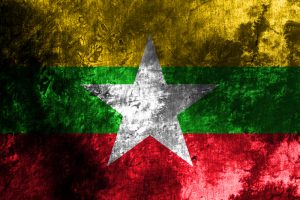Up to 25,000 people have been forced to flee their homes due to the recent upsurge of fighting in the northern part of Myanmar’s Shan State, “straining an already underresourced humanitarian response,” the United Nations said today.
In its latest flash update on the situation in Myanmar, the U.N. Office for the Coordination of Humanitarian Affairs (UNOCHA) states that more than 23,000 civilians have been displaced due to the escalation in fighting, up from around 6,200 people as of October 30. These people, who are now “mainly sheltering in religious structures and forest areas,” come on top of the more than 14,000 who were already displaced in northern Shan.
UNOCHA added that the conflict, which began with coordinated offensives by ethnic armed groups on October 27, had now resulted in the confirmed deaths of “at least nine civilians, including children, with additional injuries reported.”
Similar figures were published in an article yesterday by Myanmar Now, based on estimates from local civil society and aid organizations, which put the number of displaced at around 25,000. According to the article, at least 13,000 displaced locals have taken shelter in towns around the conflict zone, including more than 6,500 in Lashio, northern Shan State’s largest city and the location of the military’s Northeastern Regional Military Command headquarters, and 5,000 in Hsenwi, a town about 50 kilometers to the northeast.
The report stated that the remainder are believed to have fled to the neighboring territory controlled by Myanmar’s most powerful ethnic armed group, the United Wa State Army (UWSA), which is reportedly providing them with support. The UWSA has declared its neutrality in the current conflict.
The “surge of newly displaced persons,” as UNOCHA describes it, speaks to the ferocity of the battles that have raged across large parts of northern Shan State since October 27. On that date, the Three Brotherhood Alliance, which includes the Arakan Army, the Myanmar National Democratic Alliance Army (MNDAA), and the Ta’ang National Liberation Army, launched a broad offensive against Myanmar’s military administration and its allies in northern Shan State. The attack has been accompanied by attacks on junta positions by resistance groups in other regions of the country.
Operation 1027, as it has been dubbed, aims to expel Myanmar military forces and their allies from northern Shan State, particularly from the Kokang Self-Administered Zone (SAZ), a sliver of territory along the Chinese border that was under MNDAA’s control prior to 2009.
So far, the resistance forces have made rapid gains, overrunning dozens of junta positions across northern Shan State. The Three Brotherhood Alliance said yesterday that at least 92 military outposts and four towns were now under its control, according to a report by The Irrawaddy. Among the most prominent are Chinshwehaw, a town situated on an important border crossing with China, and Hsenwi, which occupies the strategic crossroads of the highways leading from central Myanmar to the major border crossings with Chinshwehaw and Muse.
Fighting continues in a number of parts of northern Shan, and while the situation is fluid and hard to predict, Alliance troops appear to be tightening the noose on Laukkai (aka Laukkaing), the capital of the Kokang SAZ and the likely ultimate objective of Operation 1027.
Under its current junta-friendly leadership, which broke off from the MNDAA and helped expel it from Kokang in 2009, Laukkai has recently gained notoriety as a hub for online gambling and scam businesses controlled by prominent local crime families, the closure of which is one of the publicly declared goals of the resistance offensive.
In recent weeks, the SAZ authorities have handed hundreds of suspected fraudsters and human traffickers over to the Chinese government, after Beijing pressured the military junta to press its allies to crack down on criminal fraud operations. However, The Irrawaddy reports that Myanmar military forces and their Kokang allies are now holding 500 foreigners hostage in the town.
The foreigners, which include 189 Thai nationals and people from as far afield as Nepal, Ethiopia, and Laos, were recently rescued from online scam operations in the area, but have now been prevented from leaving the area. “The army is using them as forced labor to build bunkers, dig trenches, and carry timber. They are practically human shields,” one source who has taken part in efforts to rescue the victims told The Irrawaddy.
Some Chinese reports suggest that prominent crime families in Laukkai are now hunkering down for a siege, suggesting that any battle for the town could be bloody and protracted, risking the displacement of many more thousands of civilians.
In addition to its humanitarian impacts, the resistance offensive has forced the closure of the main highway leading from central Myanmar to the Chinese border, and stopped all trade at the Ruili-Muse border crossing, the main conduit of trade with China.
Prolonged Chinese border closures will only add to the concerns of the military administration. According to statistics from the junta’s Ministry of Commerce cited by Myanmar Now, from April to September of this year, more than $1.3 billion in trade passed through the Muse border gate, and $633 million of goods through the Chinshwehaw gate – about 40 percent of the country’s total official overland trade.
Yesterday, the AFP news agency reported that price of rice and other commodities brought in from southern Myanmar had more than doubled at some shops in Muse.

































